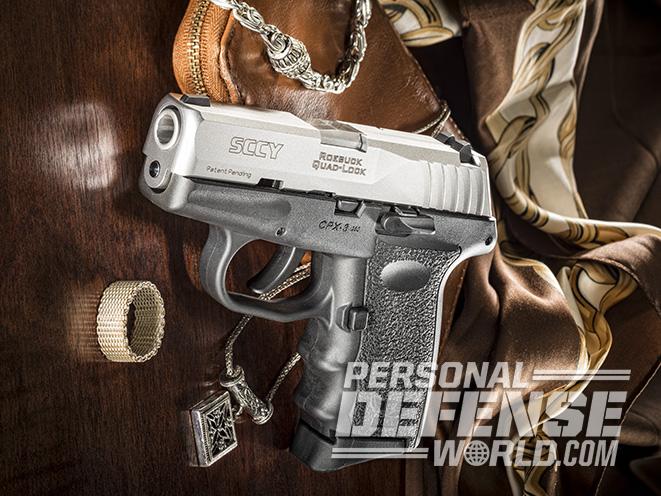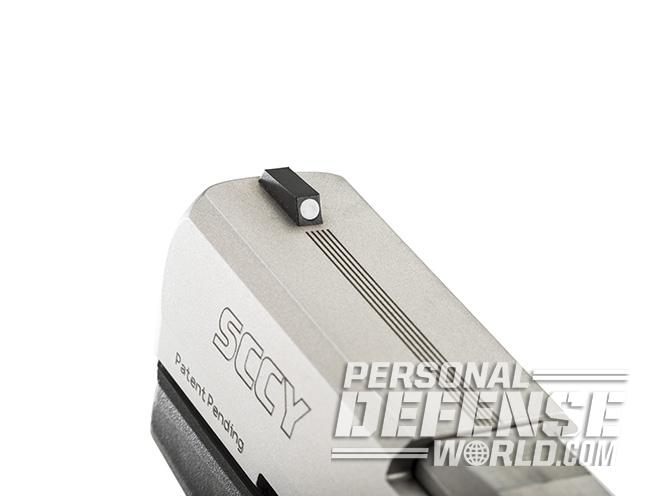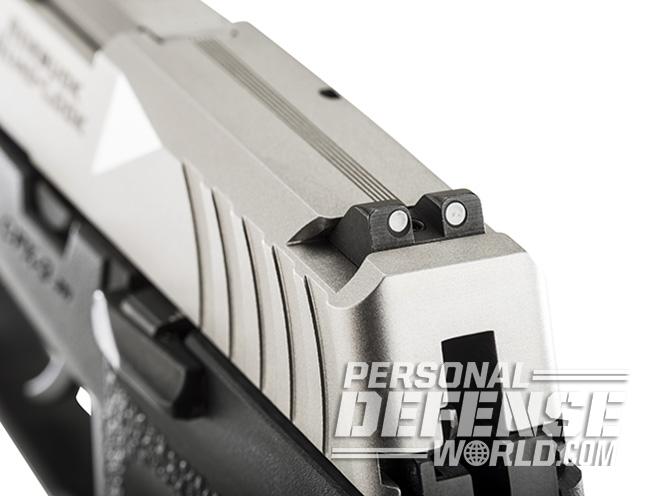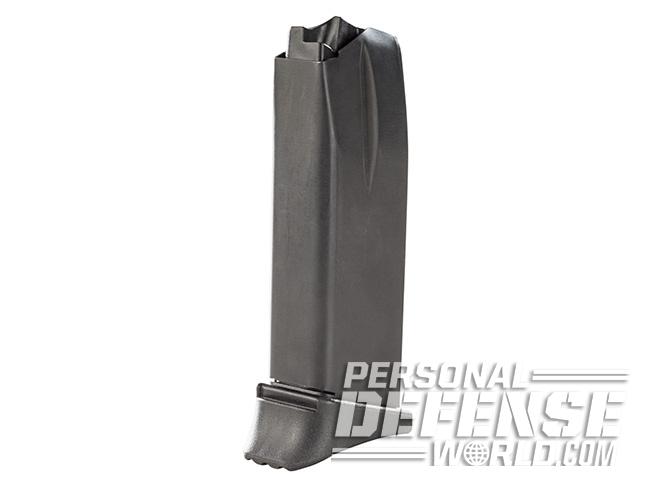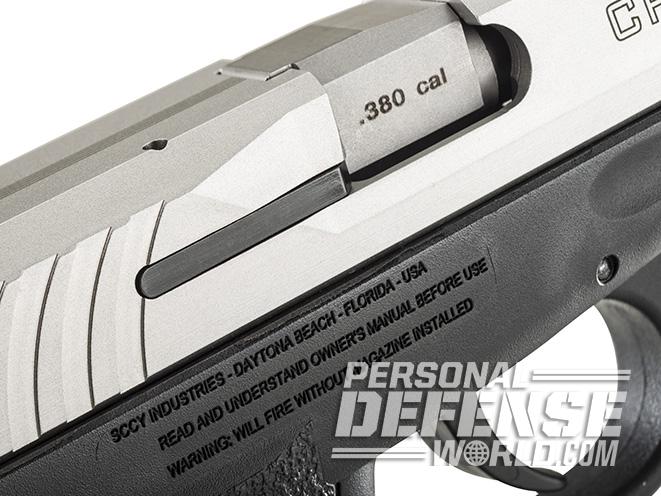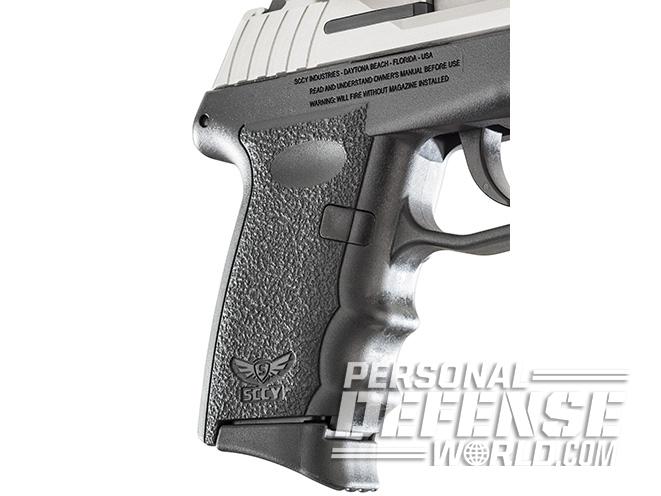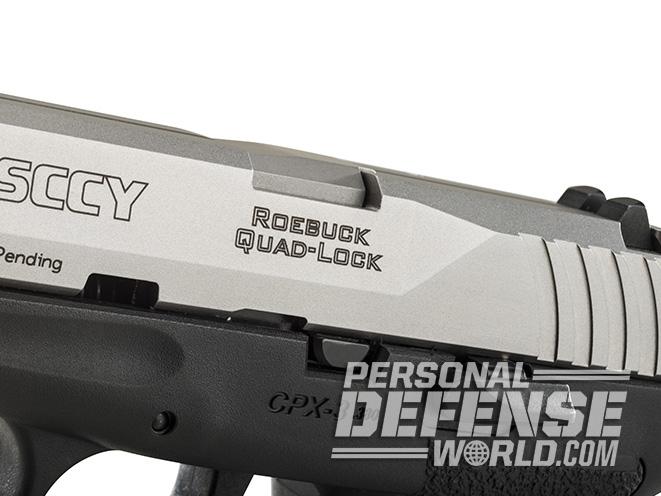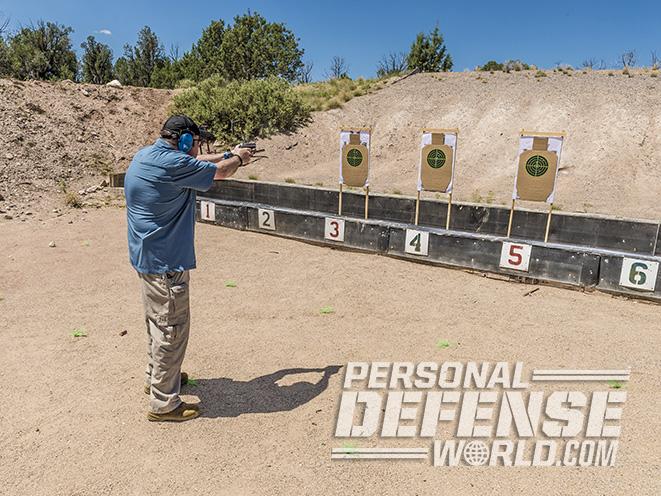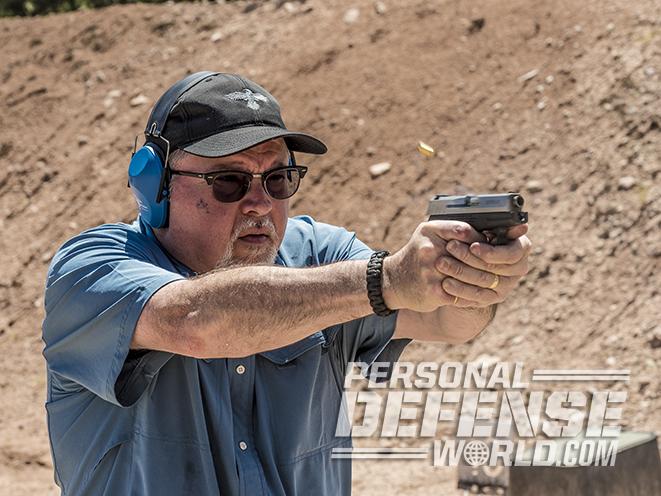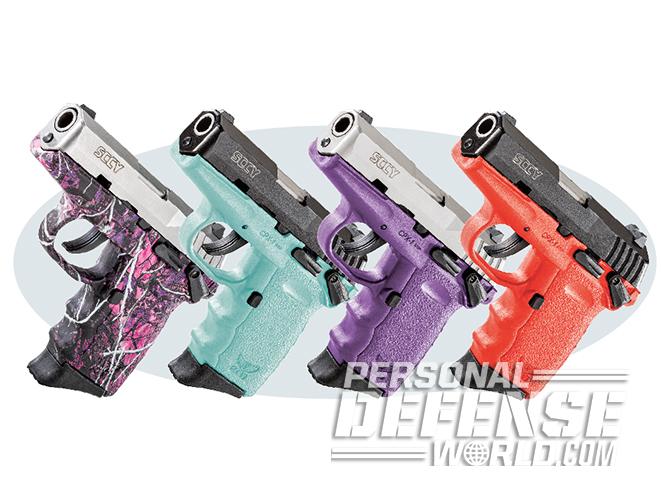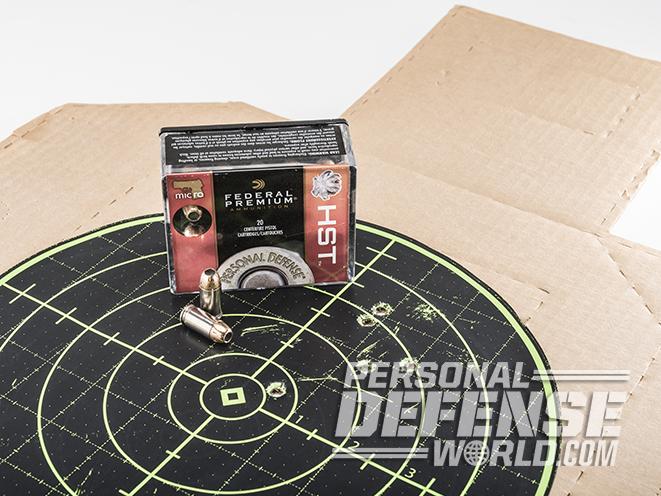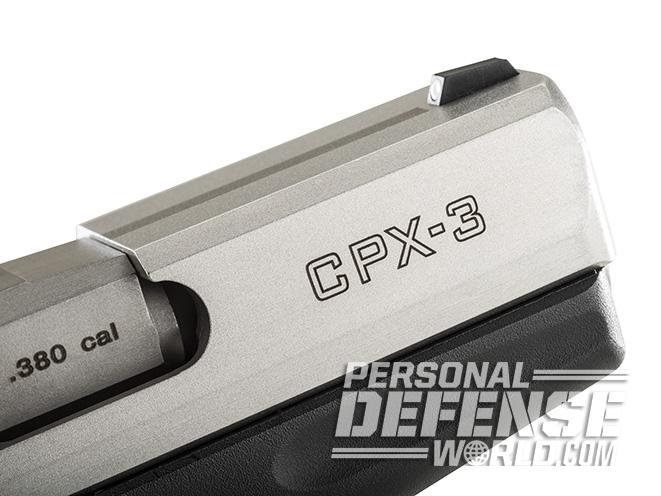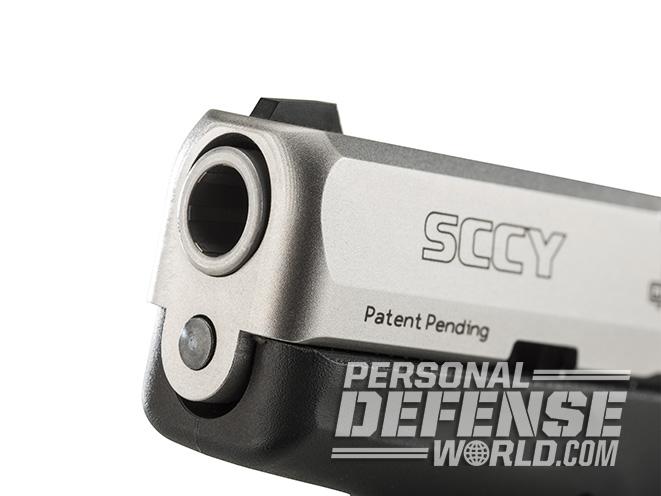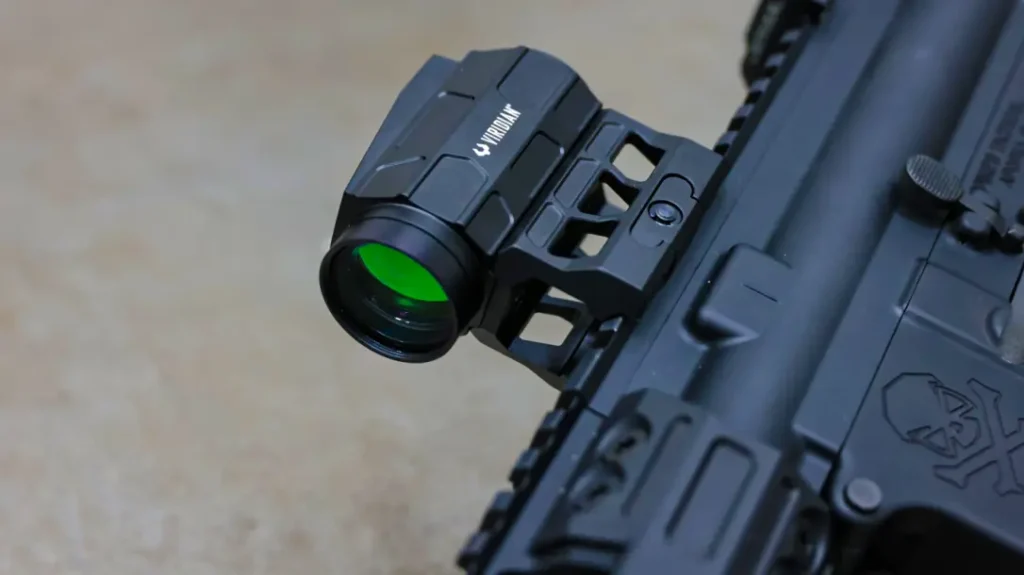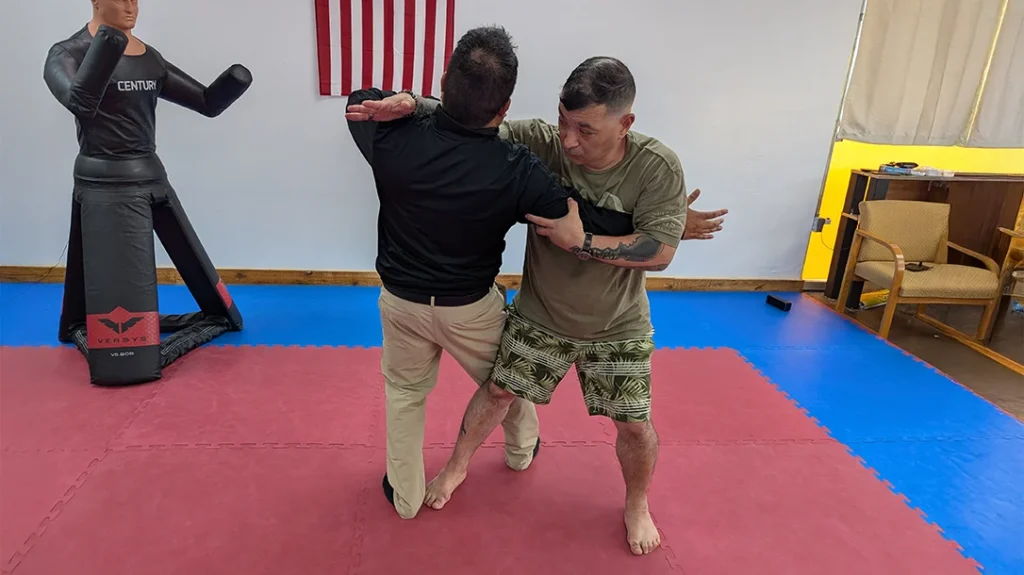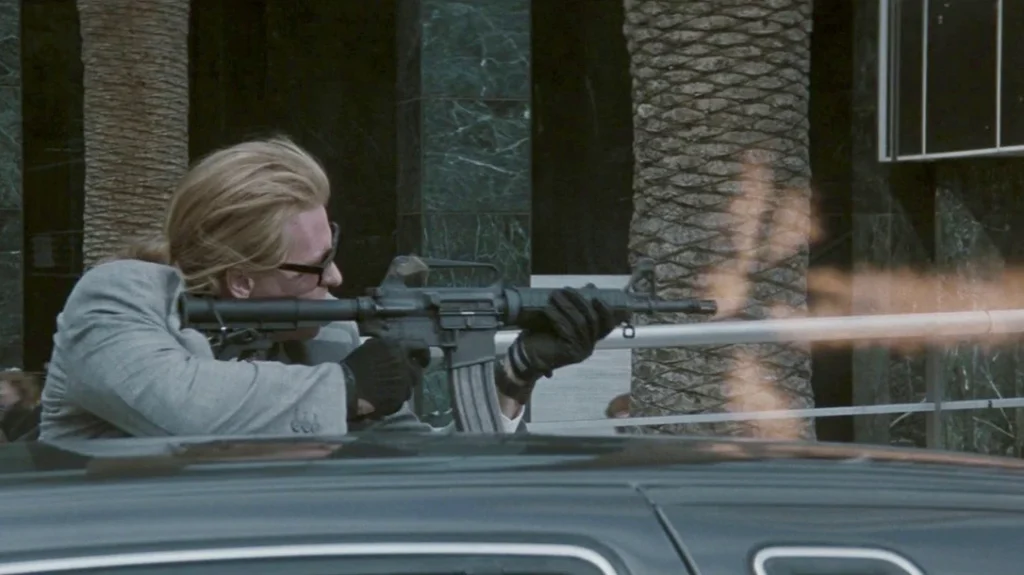With so many states passing concealed-carry laws, the market for lightweight and easily hidden handguns has grown exponentially. This has brought gun enthusiasts a vast selection of smaller and lighter handguns in all colors, materials and calibers. Enter SCCY Firearms (pronounced “sky”).
Back in 1998, Joe Roebuck recognized the demand for a safe, affordable and simple-to-use handgun. Roebuck had over three decades of experience in manufacturing, and he applied his vast experience as a mechanical engineer and tool and die maker to design the CPX line of handguns. Roebuck started Skyy Industries in 2003, which later became SCCY Firearms.
All In The Family
I tested my first SCCY pistol—a first-generation CPX-2—back in 2013. The CPX-1 and CPX-2 are compact 9mm models made here in the U.S. with stainless steel slides and barrels machined from bar stock with state-of-the-art CNC machinery. Their 3.1-inch barrels have 1-in-16-inch right-hand twist rates with seven lands and grooves for enhanced accuracy. The receivers are machined from 7075-T6 heat-treated aluminum alloy, also cut from bar stock, while the grip frames are made of Zytel polymer with ergonomic finger grooves and textured sides. The pistols also feature all-steel, fully encapsulated recoil systems designed for easy disassembly and reassembly. The slide locks are steel with Zytel overmolded extensions for ease of operation. As for differences, the CPX-1 has an ambidextrous thumb safety while the CPX-2 does not. That’s it.
Advertisement — Continue Reading Below
These guns use a double-action-only (DAO) firing system consisting of an internal hammer with an inertial firing pin to prevent accidental discharges if dropped. The trigger is designed for shooter comfort and accuracy, with a smooth, consistent 9-pound pull. Along with a custom triggerguard lock and two keys to prevent children from accessing the handgun while stored, two double-stack, 10-round magazines are included with each variant. The magazines come from the SCCY factory with finger extensions installed, but two flat baseplates are also provided.
- RELATED STORY: The SCCY’s the Limit with the Compact CPX-2 9mm
The pistols have three-dot sights, including a steel rear unit that is adjustable for windage with a locking screw that prevents your adjustments from shifting. Finally, all CPX series pistols are guaranteed for life, with a transferable “no questions asked” warranty.
From day one, I was impressed with the clean lines and finish on the CPX-2’s slide, the tolerances between the slide and receiver, and the way the grip frame fits my hand comfortably. Even though the magazines come from the factory with an extended finger rest, I actually preferred the included flat baseplate; it felt more comfortable while I carried the gun. I tested several holsters from different manufacturers—inside- and outside-the-waistband rigs and even pocket holsters. I settled with a simple Galco inside-the-waistband clip-on holster.
Advertisement — Continue Reading Below
The New Breed
SCCY Firearms released the CPX-3 in 2017, which I can only describe as a more compact version of CPX-2. The newest member of the CPX family is chambered in .380 ACP, unlike its 9mm siblings. The CPX-3 has the same overall profile of the CPX-1 and CPX-2 and the same white-dot front sight, drift-adjustable white-dot rear sight and trigger configuration. Because of the lighter recoil of the .380 ACP ammo, Roebuck left the recoil-absorbing cushion slots of the 9mm models off of the grip, just ahead of the backstrap.
But the most important difference is the addition of the Roebuck Quad-Lock system. Traditional handguns seat the front of the barrel in the slide with a round surface resting in a round surface, but the patent-pending Roebuck Quad-Lock system employs an additional point of contact at the front of the barrel, where it rests in the slide. The Quad-Lock utilizes two flat surfaces in a 90-degree V-shape for the round barrel to rest in, which forces the barrel into the exact same position every single time the gun is fired. So, in short, while the traditional method of seating permits variation in where the end of the barrel seats, the Roebuck Quad-Lock eliminates this and allows for more consistent operation shot to shot.
I recently got my hands on the CPX-3 and was able to test it on the range, and that range is one of the best—Gunsite Academy in Paulden, Arizona. There, COO Ken Campbell kindly allowed me to play on Hanneken Range, which is named after Medal of Honor recipient Herman H. Hanneken. I started off by testing the new CPX-3 for reliability, making sure it did what it was supposed to do. I loaded a couple of magazines with Federal American Eagle 95-grain FMJs and just pressed the trigger as fast as I could. It fired, ejected and extracted perfectly.
Advertisement — Continue Reading Below
- RELATED STORY: Battle of the Nines – Kimber Micro 9 vs. SCCY CPX-2
After a minor range reset, I went on to test the CPX-3 for accuracy. I’m not a great shot, but I wanted to see how the DAO pistol performed at a realistic distance. Bear in mind that the CPX-3 is not a competition pistol; it is a concealed-carry defensive handgun. As I have learned from a couple of trainers, self-defense situations rarely happen at 25 to 50 yards. At that distance, you have time to run for help or get to cover. So, I set up USPSA targets with 10-inch TruGlo Tru-See Splatter targets at a distance of 5 yards—a realistic distance for a self-defense situation.
I decided to fire the pistol off-hand; I doubt anyone would have a sandbag or pistol rest in a defensive situation, either. For my test, I used Federal American Eagle 95-grain FMJs, Federal Premium 99-grain Micro HSTs and CorBon’s 80-grain DPXs and 70-grain Pow’RBall rounds. I wanted to see the difference between standard practice rounds and the high-end specialized defense ammunition.
And even though I don’t typically excel with a DAO trigger, I got fairly decent groups. I fired five rounds of each type of ammunition for an average group size of 2.44 inches. For an average shooter such as myself, that kind of accuracy isn’t bad. After the accuracy testing, I chronographed each load to see how the loads performed out of the CPX-3’s 2.96-inch barrel. To my surprise, the average muzzle velocities weren’t that far off from the advertised values of the ammunition tested.
Advertisement — Continue Reading Below
Built To Perform
I really enjoyed testing the CPX-3. For such a small, affordably priced handgun, it performed amazingly well. It was both accurate and reliable. There was little or no felt recoil or noticeable muzzle flip, which is noteworthy for such a lightweight pistol. This compact offering would make a good backup pistol, and with the right ammunition, a great primary.
In short, the CPX-3 is a great self-defense choice for anyone searching for an easily concealed pistol for pocket, purse or belt carry.
SCCY CPX-3 Specs
| Caliber: .380 ACP |
| Barrel: 2.96 inches |
| OA Length: 5.7 inches |
| Weight: 15 ounces (empty) |
| Grips: Polymer |
| Sights: Three-dot |
| Action: DAO |
| Finish: Black, stainless |
| Capacity: 10+1 |
| MSRP: $229 |
For more information, visit sccy.com.
Advertisement — Continue Reading Below
This article was originally published in “Pocket Pistols” 2018. To order a copy, go to outdoorgroupstore.com.
